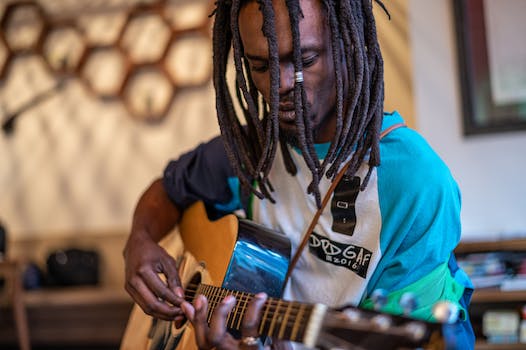The History of Reggae Music: From Ska to Dub
Reggae music has been a major influence in popular music since its emergence in the late 1960s. Originating in Jamaica, the genre has evolved from its roots in ska and rocksteady to become one of the most recognizable and beloved musical styles in the world.
The history of reggae music can be traced back to the late 1950s in Jamaica, when ska music first emerged. Ska was a fusion of Caribbean mento and calypso with American jazz and rhythm and blues. It was characterized by a walking bass line, accented guitar or piano rhythms on the offbeat, and a drumming style that emphasized the afterbeat. Ska was popularized by artists such as Prince Buster, Desmond Dekker, and The Skatalites.
In the mid-1960s, ska evolved into rocksteady, a slower, more soulful style of music. Rocksteady was characterized by a slower tempo, smoother vocals, and a more laid-back feel. Artists such as Alton Ellis, The Heptones, and The Paragons popularized the genre.
In the late 1960s, reggae emerged as a distinct style of music. Reggae was characterized by a heavy bass line, syncopated rhythms, and a distinctive offbeat guitar sound. Reggae was popularized by artists such as Bob Marley, Peter Tosh, and Jimmy Cliff.
In the 1970s, dub music emerged as a subgenre of reggae. Dub was characterized by heavy bass lines, echo effects, and a focus on instrumental tracks. Dub was popularized by artists such as King Tubby, Lee “Scratch” Perry, and Augustus Pablo.
Reggae music has since become a major influence in popular music, with its influence being felt in genres such as hip-hop, dancehall, and even pop music. Reggae has also become a major part of the music industry, with many reggae artists achieving international success.
Reggae music has come a long way since its emergence in the late 1950s. From its roots in ska and rocksteady to its evolution into dub, reggae has become one of the most recognizable and beloved musical styles in the world.
Exploring the Different Subgenres of Reggae Music

Reggae music is a genre of music that originated in Jamaica in the late 1960s. It is a musical style that combines elements of Caribbean music, such as calypso and mento, as well as American jazz and rhythm and blues. Reggae has become a popular genre of music around the world, and it has spawned a number of subgenres.
One of the most popular subgenres of reggae is dub. Dub is a style of reggae that emphasizes the bass and drum parts of the music. It is characterized by heavy use of echo and reverb effects, as well as a slower tempo than traditional reggae. Dub is often used as a backdrop for DJs and MCs to rap over.
Another popular subgenre of reggae is ska. Ska is a style of reggae that is characterized by a fast tempo and a strong emphasis on the offbeat. It is often played with horns and keyboards, and it is often used as the basis for ska-punk and ska-core music.
Reggae-rock is a subgenre of reggae that combines elements of rock music with traditional reggae. It is characterized by a faster tempo and a heavier sound than traditional reggae. Reggae-rock is often used as the basis for punk-reggae and ska-punk music.
Roots reggae is a subgenre of reggae that is characterized by its spiritual and political themes. It is often played with acoustic instruments, such as guitars and pianos, and it is often used as the basis for dub and dancehall music.
Finally, dancehall is a subgenre of reggae that is characterized by its fast tempo and its use of electronic instruments. It is often used as the basis for hip-hop and rap music.
These are just a few of the many subgenres of reggae music. Each subgenre has its own unique sound and style, and each has its own devoted fans. Whether you’re a fan of dub, ska, reggae-rock, roots reggae, or dancehall, there’s a subgenre of reggae music that’s sure to please.
The Impact of Reggae Music on Popular Culture
Reggae music has had a profound impact on popular culture since its emergence in the late 1960s. Originating in Jamaica, reggae is a genre of music that is characterized by its heavy use of the offbeat rhythm and its incorporation of elements from both African and Caribbean music. Reggae has since become a global phenomenon, influencing a variety of genres and inspiring generations of musicians.
Reggae has had a significant influence on the development of popular music. Its offbeat rhythm has been adopted by a variety of genres, including rock, pop, and hip-hop. Reggae has also been credited with inspiring the development of ska, dub, and dancehall music. Reggae has also been influential in the development of rap and hip-hop, with many of the genre’s pioneers citing reggae as an influence.
Reggae has also had a major impact on fashion. The genre’s signature style of dress, which includes brightly colored clothing, dreadlocks, and Rastafarian hats, has become a popular fashion trend. Reggae’s influence on fashion has been particularly evident in the United States, where the style has been adopted by many hip-hop and rap artists.
Reggae has also had a major influence on language. The genre has popularized a variety of Jamaican slang words, such as “irie” and “dread,” which have become part of the popular lexicon. Reggae has also been credited with popularizing the use of patois, a dialect of English spoken in Jamaica.
Finally, reggae has had a major influence on politics. Reggae has long been associated with the Rastafarian movement, which is a religious and political movement that advocates for the rights of the oppressed. Reggae has also been used as a tool for social and political activism, with many reggae artists using their music to speak out against injustice and oppression.
In conclusion, reggae music has had a profound impact on popular culture. Its influence can be seen in the development of popular music, fashion, language, and politics. Reggae has inspired generations of musicians and has become a global phenomenon.

